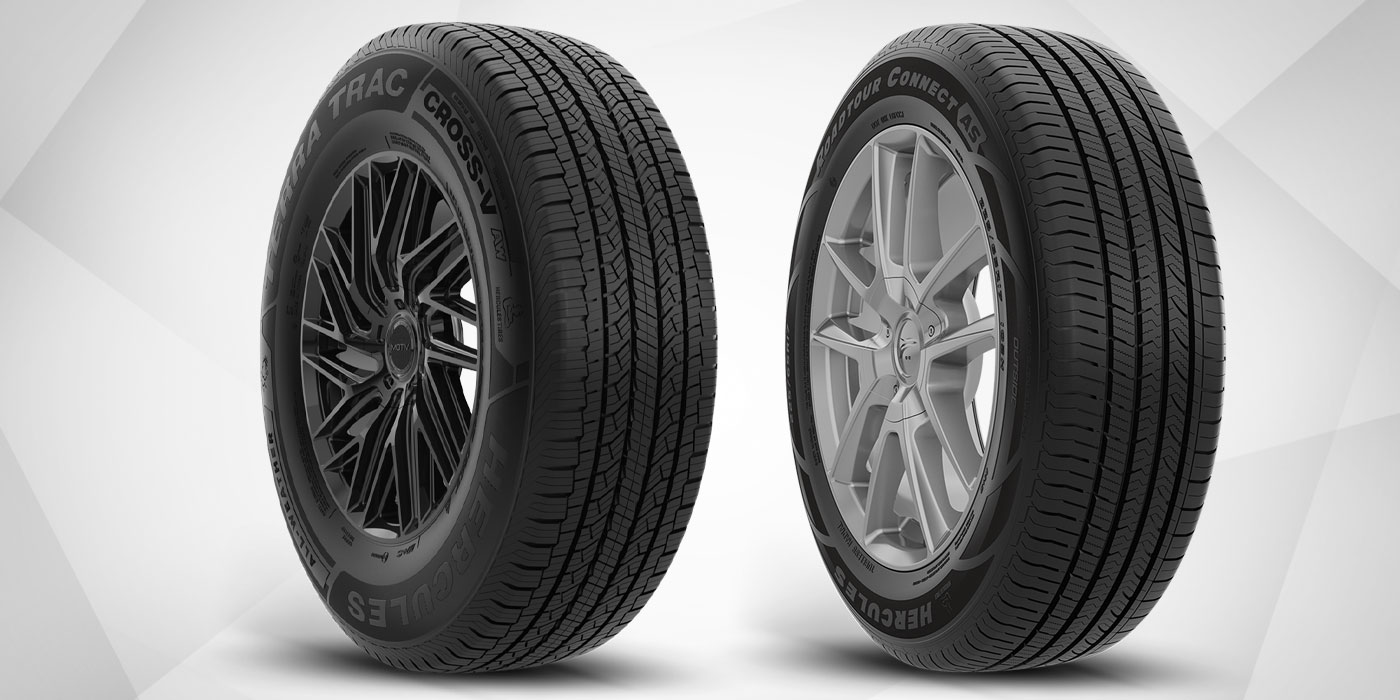Today, retreading is an integral part of most successful commercial tire servicing operations. The synergy gained from combining replacement tire sales with tire/wheel servicing and retreading makes good business sense from the viewpoints of both the fleet customer and the tire dealer.
Truck fleet operators, both small and large, have precious little time and few resources available to shop multiple suppliers for closely related products and services, such as tires and wheels. In fact, some have even attempted to quantify the additional costs associated with maintaining multiple supplier relationships beyond those absolutely necessary from a logistical or geographic servicing capability.
The old expression, “time is money,” has never been more true in these times of lean staffing and compressed margins. Combine that with volatile pricing and the rising cost of fuel – the truck operator’s highest cost item after labor ®“ plus freight contracts that often make it difficult (or impossible) to collect for these variations, and the security blanket of having a reliable, trusted and cost-competitive tire and retread supplier begins to sound very appealing.
At the same time, this places greater – not lesser ®“ pressure on tire dealers to deliver the right new tires and retread products at the right cost and to the right places ®“ and still make a reasonable profit themselves. And, expanding their relationships with fleet customers will take far more than the “next big thing” in the way of new and/or retread technologies.
Fewer, More Efficient
The retreading business remains tough. There are fewer retreaders operating today than ever before – fewer than 1,000 by most counts. Those remaining, though, are turning out the same number of units per year ®“ about 15 million medium truck retreads in 2003 ®“ as a far larger market produced a decade ago.
That means today’s retreaders are more efficient than ever before, and the trucking industry remains committed to retreaded radial tires.
While there have been no great technological breakthroughs in retreading for some time, some technology evolutions have contributed to the continued strength of retreaded tires in truck applications – particularly as retreads continue to converge with new tire developments. Today, tread pattern designs of the most popular new drive and trailer axle offerings quickly show up as similar retread options for both pre-cure and mold-cure operations.
The concept of offering retreads that mimic the visual appearance of well-accepted new tires has several advantages. Besides having some degree of new tire feature/benefit spin off to those responsible for the retread purchase decision, it also plays well with drivers who see a familiar looking tread and mentally translate that to on-road performance experience.
Some fleets are now also beginning to consider the “soft” performance properties of retreads – such as noise generation at highway speed, wet traction, susceptibility to irregular wear and even fuel economy/rolling resistance ®“ that were not necessarily high on past performance characteristic lists. These variables are all affected by tread pattern design and rubber compounds, two areas that have received a lot of attention from retread product manufacturers.
While advancements in new tires can facilitate the quick acceptance of like-appearing/like-performing retreads, this is becoming quite commonplace in the industry. What, then, should tire dealers focus on to differentiate their own offerings?
Well, for starters, there are three things that will generally ensure a mutually successful retreading relationship with any fleet customer – reliable service, comprehensive coverage and modern equipment and technology.
Reliable Service
The reliability of tire service providers is a key factor to most fleet customers. This generally means tire dealers should perform as expected.
Fleets should be provided with on-time pickups and deliveries, accurate first-time billings, up-to-date accounting of casings processed and prompt reports of any potential maintenance issues indicated by excessive RARs or other factors.
There should be no disruptive surprises or broken promises. And, dealers should deliver early warnings of any mechanical tire performance issues that can be ascertained from inspecting new tires or retreaded casings. In the trucking business, surprises are not fun!
Comprehensive Coverage
Comprehensive tire/wheel coverage can also set one dealer apart from another and provide an incalculable advantage to a fleet. The key here is for the tire dealer to understand the fleet customer’s needs. This is best accomplished by viewing the customer®™s business as if it were the dealer®™s own.
It is certainly important to listen to customers describe their needs and wants. But truly effective dealers go further by trying to maximize the efficiencies that can be achieved by the best integration of fleet needs and dealer capabilities, either current or expanded, for mutual benefit. Some examples of this symbiotic relationship would be inventory level commitments, wheel and rim refinishing and even procurement of low-volume items the fleet may periodically require.
The goal for the tire dealer is to earn the position of “tire/wheel expert” or, at least, become the first-choice supplier in the minds of customers. New opportunities for expanded business and referrals will often accrue from such established relationships. Some dealers have even gained incremental revenues from inspecting and repairing mud flaps, taillights and turn signals and performing other routine maintenance tasks during fleet inspections or scheduled tire services.
Another vital area is tire performance monitoring. Repairs and retreadings have become high-tech exercises, with definitive bottom-line implications. Available performance monitoring software can not only monitor cost-per-mile, it can help optimize tire procurement and inventory, predict removal mileage, monitor tire movement through its lifecycle, assign tires/retreads to specific trucks and trailers down to the wheel position (even offer suggestions to maximize investment), and maintain comprehensive histories on each and every tire through their entire lifecycles. It can even provide complete cost analyses that can help determine future tire requirements.
Equipment & Technology
Keeping abreast of technology developments is always important and can be used to separate products and services from other comparable, or even generic, offerings. Adopting new technology, however, adds cost and complications.
New or innovative developments are always tempting, as they provide fuel for salespersons’ pitches. But remember that the tire business is a mature industry, and the real litmus test is whether or not the new technology delivers either a definitive cost savings for the retread processor or specific and quantifiable benefits to end users.
Quantifying Savings
Those quantifiable benefits are bottom-line results. Technology integration doesn’t happen in the trucking industry unless there are well-defined dollars-and-cents advantages. The same can be said for individual tire dealer-truck fleet relationships. For either party to see extended benefit, it®™s necessary to go a step deeper and quantify a fleet customer®™s real cost savings.
Keep in mind, though, that cost savings can be direct or indirect. Overall savings can be realized if related costs – or losses ®“ can be positively affected, beyond the simple unit cost or typical retread cost-per-mile analysis. A fleet, for example, will likely enhance the retreadability of its tires and lower its scrap rate by altering its removal mileage schedule. But, in real terms, how might shortening the service life of new and retreaded tires also save the fleet in terms of reduced downtime and improved delivery?
Just as there are no industry standards for calculating overall cost-per-mile of fleet operations, total tire costs, including those of retread programs, tend to be fleet specific.
For example, which accounting system best addresses tires delivered on new equipment (including taxes), or those acquired through emergency, on-the-road purchases? How about for those tires that came on used equipment that is sold, traded, or scrapped? Are any tire repairs or rotations needed due to irregular wear expensed as routine maintenance, or are they charged specifically to a tire account? How do you handle driver-damaged tires and those involved in accidents and security losses? Closer to home, how are RAR tires treated?
It is possible for retreaders to show fleet customers how their processes, inspection procedures, in-plant and external inventory control, reduced unscheduled maintenance, lower warranty condition rate and other factors can positively influence their operating costs.
But to accomplish this, not only does the dealer/retreader need to understand his own costs, he must understand both the fleet’s tire/wheel cost accounting systems and its cost perceptions. Conversely, because this should be a partnership, the fleet must be forthcoming with proper information and explanations so that the dealer/retreader can provide a valid assessment – and gain an understanding of how this business partner must operate to remain viable.
Knowing and understanding the fleet’s accounting systems and cost issues will also establish parameters by which the effectiveness of any new technologies or ideas can be measured.
Look Beyond the Obvious
Landing new business – or expanding relationships with existing customers ®“ is hard. From the tire dealer/retreader perspective, there is little in the way of new technologies that deliver clear-cut cost or performance benefits. Therefore, opportunities must be found elsewhere.
Dealer/retreaders may discover new ideas and fresh marketing approaches by studying several large, successful fleets in their area. One of the best ways is to choose operations that don’t appear to be having any problems and try to learn as much as possible about their supplier agreements. For example, how are fast are irregular wear complaints handled? Traditionally, such issues have generated warranty claims, but they could generate incremental alignment business, too, if detected, corrected and explained properly.
Another example may be agreeing to maintain a minimum tire bank for valued fleet customers. This inventory could consist of mutually selected quantities of new and retreaded tires based on past usage requirements. The obvious benefits to the fleet include less vehicle downtime and more cost effective tire applications.
Competitive Weapons
Neither the dealer/retreader nor the fleet can rely only on technology to fight competitive battles.
Just as some of the "soft" performance characteristics of retreads are receiving attention, so too are the "soft" aspects of a dealer/retreader’s performance. These are the real competitive weapons, but it is up to both sides to use them wisely.













